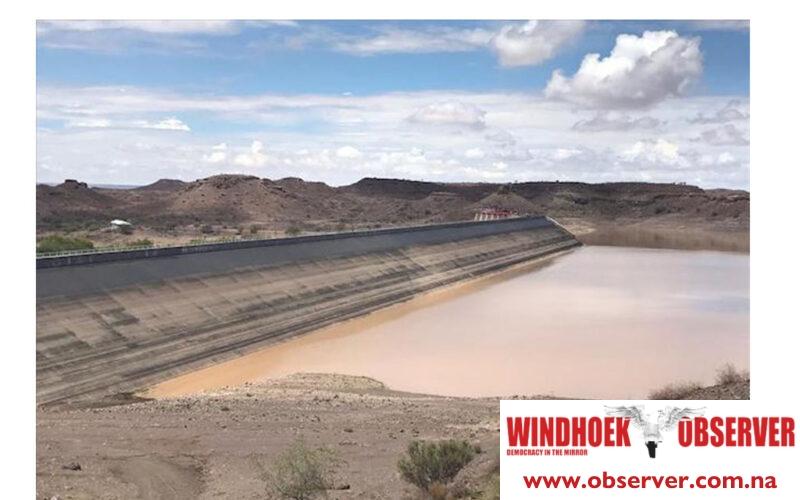Allexer Namundjembo
At its lowest level ever, 6.3%, Hardap Dam can no longer supply irrigation water for crops being farmed below the dam wall.
Calle Schlettwein, the minister of agriculture and water, made this statement last week, just hours before the Hardap Dam water supply valves were closed for the first time in history.
“Water supply for domestic usage and livestock will be available until February 2026 (with no inflow this season). Drought is showing its drastic effect,” said Schlettwein.
Schlettwein said the past rainy season produced the lowest runoff in the past 100 years, which is why dams had very low inflows.
He said there is a need to better cope with water scarcity as it is becoming an increasing threat to the country’s development ambition.
“The strategy we follow is to integrate fresh water sources and link them up so that we induce greater resilience and better security of water supply,” he said.
Namwater suspended the process of drawing water for irrigation from the Hardap Dam last week.
Farmers at the Hardap irrigation scheme have raised their grievances following the closure of the Hardap Dam water supply valves.
The irrigation scheme uses the dam’s water to grow wheat, watermelons, lucerne, and maize.
Hardap Farmers Association and board member of the Crop Producers’ Association, Dawie De Klerk, told Agri Forum Namibian Agriculture Magazine that the farmers were only able to irrigate 25% of their designated irrigation land over the past few months.
“If the dam receives enough inflow during the coming rainy season, farmers will be able to use water from the dam for crop production again. If the rainfall is insufficient, then unfortunately, they won’t be able to,” De Klerk said.
This scheme is traditionally the largest producer of wheat, annually cultivating between 800 and 1 000 hectares, with an average yield of between 6 400 and 8 000 tons.
The dam’s closure not only impacted crop production but also led to the retrenchment of approximately 650 workers.
Other farmers took to social media, requesting prayers for rain.
Dirkie Cloete said the nation must have faith.
“The mighty Hardap dam is going to rise. Water will return in abundance. Blessings will flow from it in the form of an abundance of jobs and a new look, Mariental, with us as residents of that part of town. Everything is going to be fine,” he said.
Farmer Et Ross added that the Namib desert is currently experiencing one of the worst droughts ever recorded.
“Desert-adapted animals are also feeling the pinch. On our reserve, we supply water and salt licks for the time being. For them, there is nothing to eat, and many pregnant cows are taking great strain. Please pray for the outcome of this serious disaster,” he said. NamWater spokesperson Lot Ndamanomhata explained that the decision to suspend the water supply from the Hardap Dam was due to current water levels.
“This action aligns with NamWater’s commitment to secure water reserves for essential use, including potable and livestock needs, ensuring an adequate supply until the projected dry date of February 2026,” Ndamanomhata said.
He said that the suspension does not affect the supply of drinking water to the Mariental Municipality or surrounding communities.
He added that consultations and analyses were conducted with stakeholders to assess the availability of dead storage water, enabling irrigation water supply through October.
Beyond this period, the remaining water reserves will be prioritised for human consumption and livestock needs.
“NamWater recognises the critical need for water conservation during these times and encourages all Namibians to save water, especially as Hardap Dam levels remain under pressure. We reassure residents that this move is a proactive approach to managing the region’s water resources responsibly. We are monitoring the situation closely and remain committed to balancing the needs of agricultural producers, residents, and the local economy,” Ndamanomhata said.




